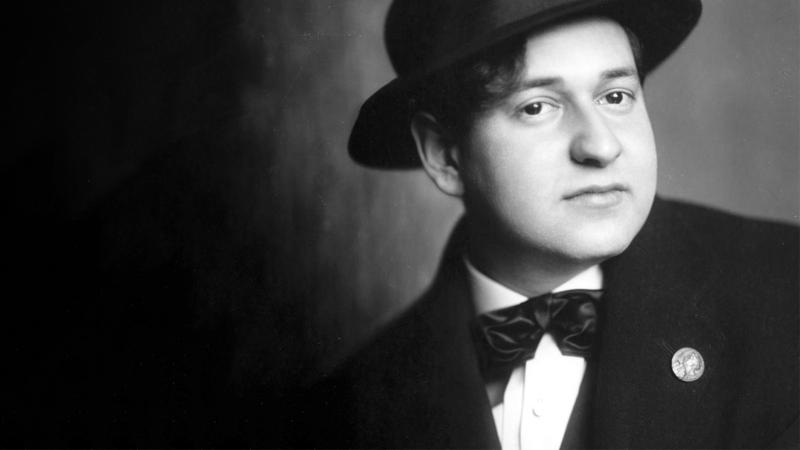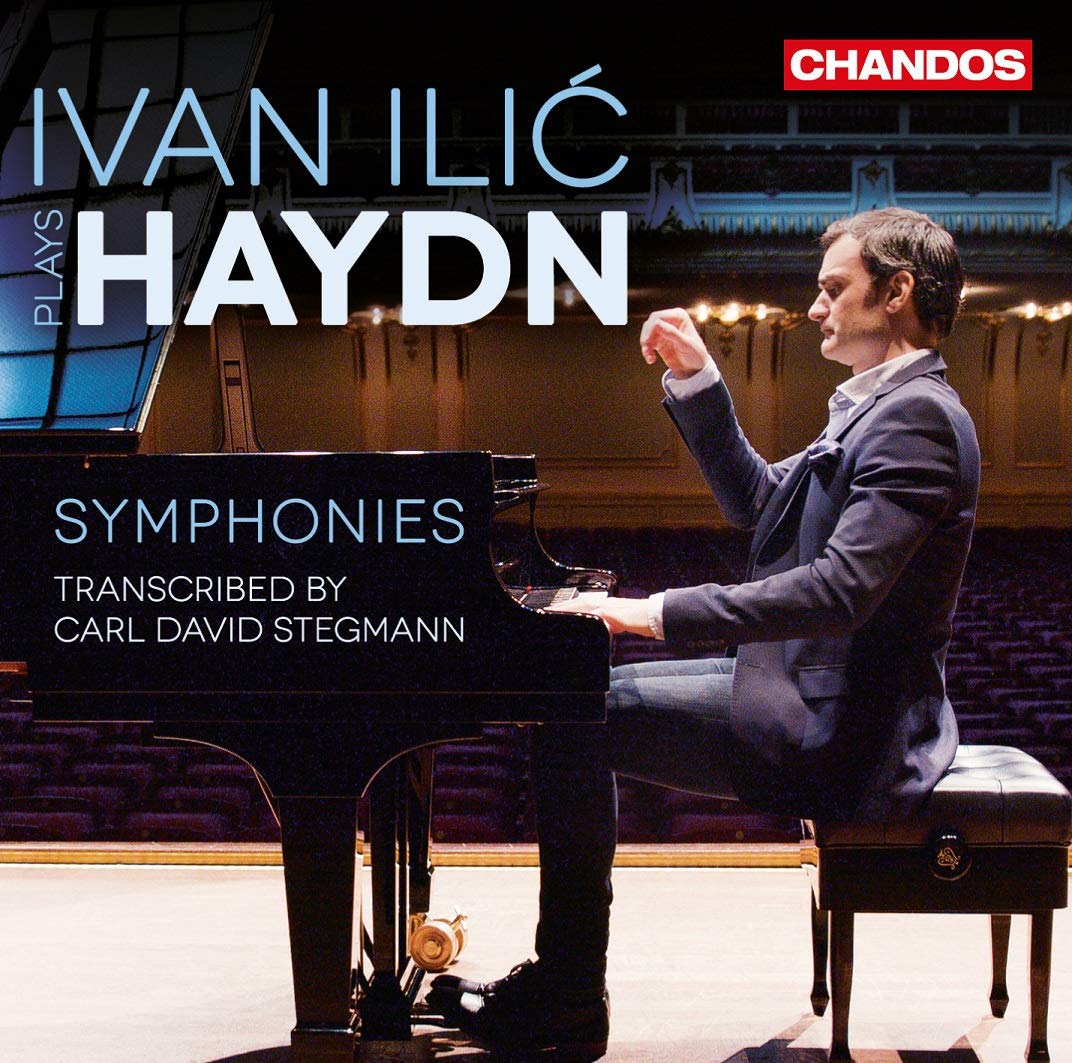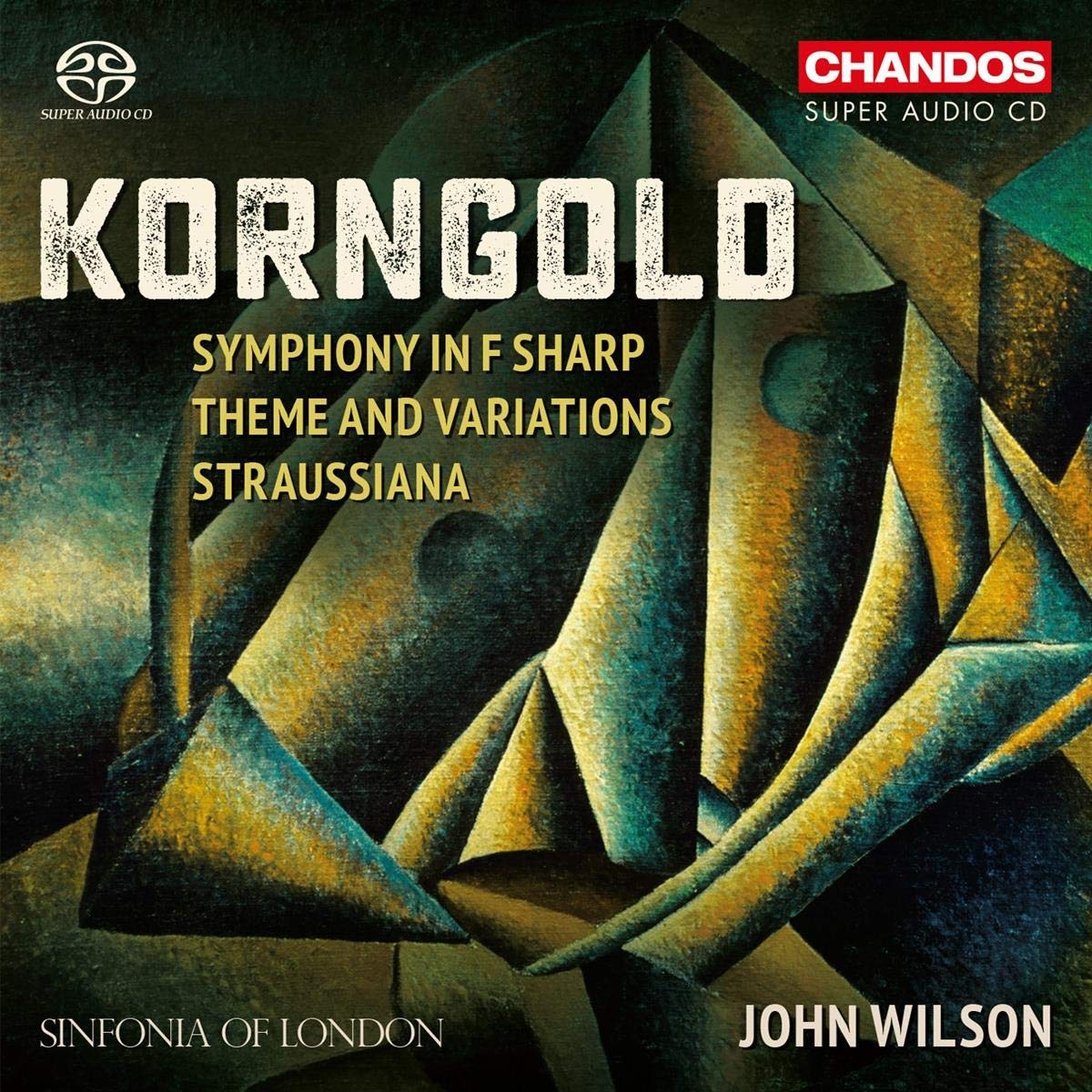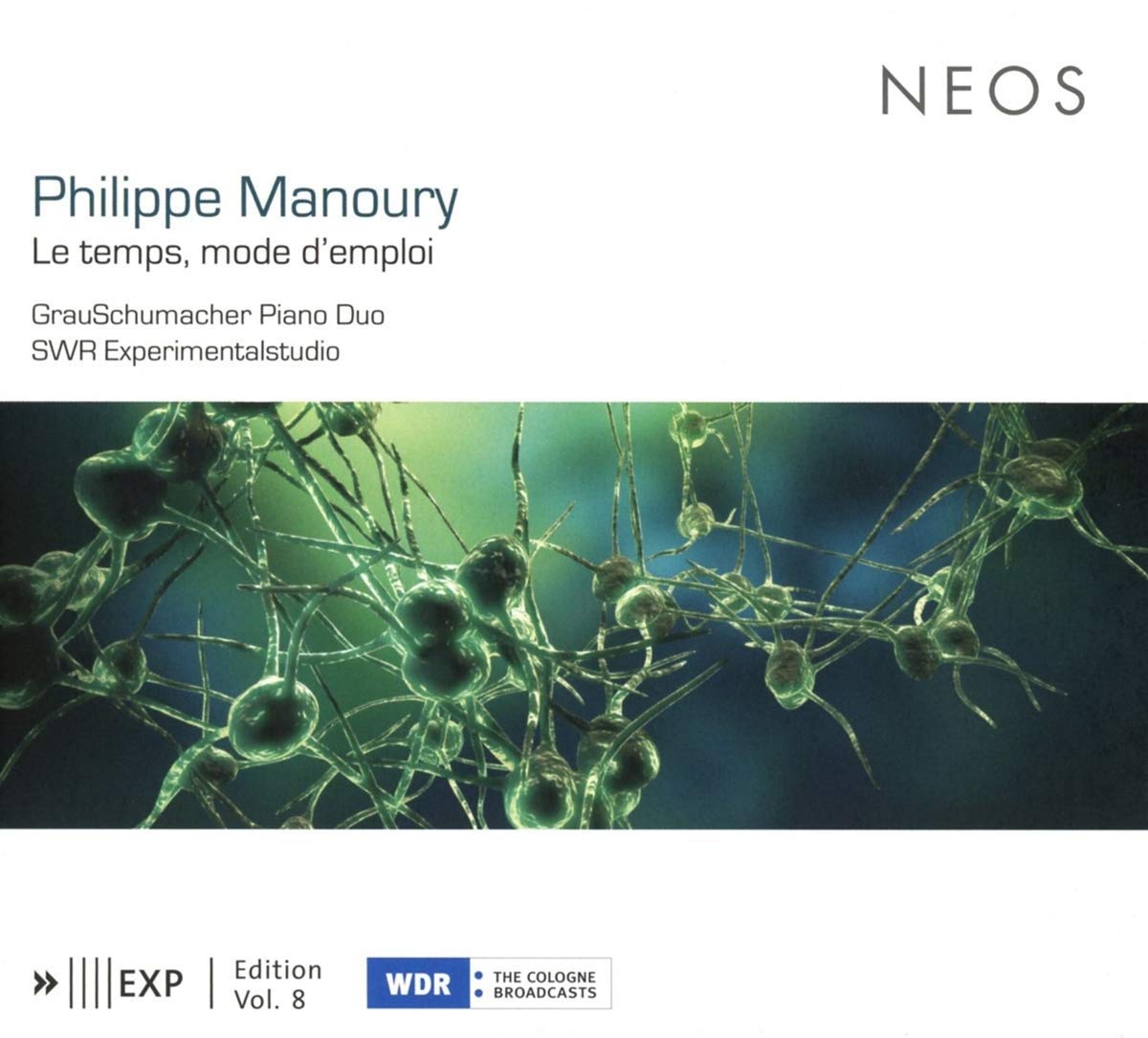Classical CDs Weekly: Haydn, Korngold, Philippe Manoury | reviews, news & interviews
Classical CDs Weekly: Haydn, Korngold, Philippe Manoury
Classical CDs Weekly: Haydn, Korngold, Philippe Manoury
Classical symphonies transcribed for piano, a late, late romantic symphony and an electro-acoustic piano duo

 Haydn, arr. Stegmann: Symphonies 44, 75 and 92 Ivan Ilić (Chandos)
Haydn, arr. Stegmann: Symphonies 44, 75 and 92 Ivan Ilić (Chandos)
The easiest way for amateur music lovers to get to know orchestral pieces used to be through piano transcriptions and chamber arrangements. Liszt’s versions of Beethoven symphonies are the genre’s high-water mark, and I’d point the curious in the direction of Yury Martynov's glorious cycle on Alpha Classics. Here, Ivan Ilić gives us three mature Haydn symphonies in arrangements by one Carl David Stegmannn, a tenor, harpsichordist and composer active in Hamburg and Bonn, who arranged 25 Haydn symphonies for the publisher Nikolaus Simrock between 1811 and 1814. Stegmann’s scores were only rediscovered recently thanks to a chance meeting in a Cologne supermarket, and Ilíc tells all in a neat footnote to Marc Vignal’s booklet essay. No 44, the “Trauersymphonie”, is a good place to start exploring. There aren't many superfluous notes in Haydn, and Stegmann’s lean, very pianistic transcription does make one marvel anew at this fraught, frantic piece. Haydn's bare, spare opening gesture isn't lacking in colour; Ilíc’s alert, intelligent playing more than compensates. There's warmth aplenty in the Adagio and an athletic, punchy finale.
Haydn's harmonic and structural boldness is always apparent; No 92’s slow introduction is startling, as is the way the fast section’s main theme steals in unnoticed. And fun to hear those impossible horn notes in the last movement pumped out courtesy of Ilíc's left hand. No 75 opens pompously before Haydn’s mercurial 4/4 main section blows away the cobwebs. Stegmann and Ilic convinced me; passages really do sound like a grand classical keyboard sonata. This is a major accomplishment, another engaging act of musical archaeology from a very smart musician. It’s superbly performed and warmly recorded too, and will hopefully prompt you to listen to Haydn's originals with fresh ears.
 Korngold: Symphony in F sharp, Theme and Variations, Straussiana Sinfonia of London/John Wilson (Chandos)
Korngold: Symphony in F sharp, Theme and Variations, Straussiana Sinfonia of London/John Wilson (Chandos)
Erich Wolfgang Korngold's 1952 Symphony in F sharp is more heard about than actually heard. A resounding flop after an under-rehearsed Vienna premiere, the score gathered dust until conductor Rudolf Kempe rediscovered and recorded it in 1972. The slow movement recycles a theme from Korngold's score to The Private Lives of Elizabeth of Essex, and the juddering opening was sketched as far back as 1919. Pitching the work in F sharp was surely a nod to Mahler’s 10th, allusions to the Austro-German symphonic tradition heard alongside snatches of Copland. But, somehow, it hangs together beautifully, and if you're expecting 50 minutes of unrelenting Hollywood slush you'll be surprised. Or under 45 minutes here, one virtue of John Wilson's spectacular new recording being its swift tempi. Korngold's uncompromising first movement roars and snorts with rage here.
Wilson sets an alarmingly fast speed in the scherzo, his newly reconstituted Sinfonia of London rising to the challenge with ease. The big horn theme has never sounded better; it's a glorious moment. As is Wilson’s cannily plotted Adagio, the fruitier climaxes brilliantly handled. He also makes the finale cohere, feverish energy helping mask the longeurs. The abrupt, exuberant coda is electrifying. It’s seriously impressive and lots of fun: definitely this symphony's greatest recorded outing. Two short, late works written for school orchestras are offered as couplings. The Theme and Variations is fun, and there's Korngold’s final work, Straussiana, an irresistibly saccahrine medley based on Johann Strauss dance tunes. Superb playing and superb engineering – one of the year’s best orchestral discs.
 Philippe Manoury: Le temps, mode d’emploi GrauSchumacher PianoDuo, SWR Experimentalstudio (Neos)
Philippe Manoury: Le temps, mode d’emploi GrauSchumacher PianoDuo, SWR Experimentalstudio (Neos)
Or Various Ways to Describe Time, a brain-boggling hour-long "musical fresco" for two pianos and four virtual pianos, created with live electronics. Time, in Philippe Manoury’s hands, is “the vessel containing and enveloping our lives”, its passing variously turbulent, troubled or calm. Pleasurable experiences whizz past in what seems like seconds, whilst tedious domestic duties go on for ever. Knowing this isn't essential to enjoying the work; what's really impressive is how well the live electronics interact with pianists Andreas Grau and Götz Schumacher. Who's behind the technology, other than the corporate-sounding SWR Experimentalstudio, isn't listed, and the booklet photos don't give much away. You want to know more about the compositional process; whether Manoury gives his sound engineers free reign to improvise and manipulate the keyboard sounds, or if every tweak is carefully notated?
Manoury worked with Boulez and IRCAM in the late 1970s, where many of the techniques used in this work were developed. The frequent bell sounds, Grau and Schumacher turned into a giant carillon, are a nod to Stravinsky's Les Noces; there's a thrilling, clangorous example at the start of the eighth and final section. Entrancing sounds apart, it's possible to enjoy the music as a demonstration of the pair’s technical skills: rich, deep chords ringing out to thrilling effect and the faster, percussive passages superbly co-ordinated. Listening in a single sitting makes the coda’s soft tinklings as emotionally affecting as they are beautiful. Neos’s production values impress, doing full justice to a beguiling, haunting piece.
Explore topics
Share this article
The future of Arts Journalism
You can stop theartsdesk.com closing!
We urgently need financing to survive. Our fundraising drive has thus far raised £33,000 but we need to reach £100,000 or we will be forced to close. Please contribute here: https://gofund.me/c3f6033d
And if you can forward this information to anyone who might assist, we’d be grateful.

Subscribe to theartsdesk.com
Thank you for continuing to read our work on theartsdesk.com. For unlimited access to every article in its entirety, including our archive of more than 15,000 pieces, we're asking for £5 per month or £40 per year. We feel it's a very good deal, and hope you do too.
To take a subscription now simply click here.
And if you're looking for that extra gift for a friend or family member, why not treat them to a theartsdesk.com gift subscription?
more Classical music
 Hallé, Elder, Bridgewater Hall, Manchester review - premiere of new Huw Watkins work
Craftsmanship and appeal in this 'Concerto for Orchestra' - and game-playing with genre
Hallé, Elder, Bridgewater Hall, Manchester review - premiere of new Huw Watkins work
Craftsmanship and appeal in this 'Concerto for Orchestra' - and game-playing with genre
 First Person: young cellist Zlatomir Fung on operatic fantasies old and new
Fresh takes on Janáček's 'Jenůfa' and Bizet's 'Carmen' are on the menu
First Person: young cellist Zlatomir Fung on operatic fantasies old and new
Fresh takes on Janáček's 'Jenůfa' and Bizet's 'Carmen' are on the menu
 Classical CDs: Chinese poetry, rollercoasters and old bookshops
Swiss contemporary music, plus two cello albums and a versatile clarinettist remembered
Classical CDs: Chinese poetry, rollercoasters and old bookshops
Swiss contemporary music, plus two cello albums and a versatile clarinettist remembered
 La Serenissima, Wigmore Hall review - a convivial guide to 18th century Bologna
This showcase for baroque trumpets was riveting throughout
La Serenissima, Wigmore Hall review - a convivial guide to 18th century Bologna
This showcase for baroque trumpets was riveting throughout
 Sheku Kanneh-Mason, Isata Kanneh-Mason, Wigmore Hall review - family fun, fire and finesse
Intimacy and empathy in a varied mixture from the star siblings
Sheku Kanneh-Mason, Isata Kanneh-Mason, Wigmore Hall review - family fun, fire and finesse
Intimacy and empathy in a varied mixture from the star siblings
 Mahler 8, LPO, Gardner, RFH review - lights on high
Perfect pacing allows climaxes to make their mark - and the visuals aren’t bad, either
Mahler 8, LPO, Gardner, RFH review - lights on high
Perfect pacing allows climaxes to make their mark - and the visuals aren’t bad, either
 Philharmonia, Alsop, RFH / Levit, Abramović, QEH review - misalliance and magical marathon
Kentridge’s film for Shostakovich 10 goes its own way, but a master compels in his 13th hour of Satie
Philharmonia, Alsop, RFH / Levit, Abramović, QEH review - misalliance and magical marathon
Kentridge’s film for Shostakovich 10 goes its own way, but a master compels in his 13th hour of Satie
 Bach St John Passion, Academy of Ancient Music, Cummings, Barbican review - conscience against conformism
In an age of hate-fuelled pile-ons, Bach's gospel tragedy strikes even deeper
Bach St John Passion, Academy of Ancient Music, Cummings, Barbican review - conscience against conformism
In an age of hate-fuelled pile-ons, Bach's gospel tragedy strikes even deeper
 MacMillan St John Passion, Boylan, National Symphony Orchestra & Chorus, Hill, NCH Dublin review - flares around a fine Christ
Young Irish baritone pulls focus in blazing performance of a 21st century classic
MacMillan St John Passion, Boylan, National Symphony Orchestra & Chorus, Hill, NCH Dublin review - flares around a fine Christ
Young Irish baritone pulls focus in blazing performance of a 21st century classic
 Classical CDs: Romance, reforestation and a Rolleiflex
New music for choir, orchestra and string quartet, plus a tribute to a rediscovered photographer
Classical CDs: Romance, reforestation and a Rolleiflex
New music for choir, orchestra and string quartet, plus a tribute to a rediscovered photographer
 First Person: St John's College choral conductor Christopher Gray on recording 'Lament & Liberation'
A showcase for contemporary choral works appropriate to this time
First Person: St John's College choral conductor Christopher Gray on recording 'Lament & Liberation'
A showcase for contemporary choral works appropriate to this time
 Donohoe, RPO, Brabbins, Cadogan Hall review - rarely heard British piano concerto
Welcome chance to hear a Bliss rarity alongside better-known British classics
Donohoe, RPO, Brabbins, Cadogan Hall review - rarely heard British piano concerto
Welcome chance to hear a Bliss rarity alongside better-known British classics

Add comment